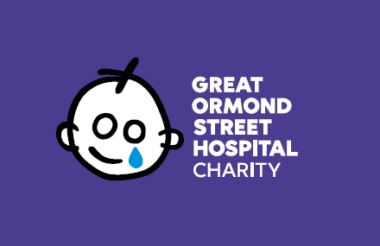Charities have faced criticism over the way they handed Presidents Club donations. David Ainsworth looks at some of the questions thrown up.
The Presidents Club, the disgraceful grope-fest masquerading as a charity do, has rightfully been shut down, we learn this morning. Good. We want nothing to do with it.
But now the inquest is beginning to start, and it throws up some interesting issues for the charities which have found themselves associated with it.
The charity sector initially came out of the scandal well. The infrastructure bodies which have previously been criticised for a slow reaction were on the front foot from the start, and the sector took a strong moral position.
But now the questions are beginning to get harder. I’d like to look at some of them.
Should charities have given the money back?
Great Ormond Street and Guy’s and St Thomas’ Hospital have already said they’ll give back all donations from the Presidents Club. There are now some questions over whether they should have done so.
It's difficult to do otherwise. To keep the money is to offer tacit acceptance for high profile sexual harassment. It is important to send a powerful message that these activities were not charitable, and that giving to charity cannot wash the moral taint off an event like this.
Not everyone agrees with this. But it would be impossible to please everyone, and probably harmful to try. Charities should probably take a strong moral stance and be prepared to have people disagree with them.
I would welcome a movement to suggest that the companies which bought tables should maybe put their hands in their pockets and make good the charities’ losses.
What will the money get spent on?
The burning question now seems to be what should be done with the dirty money raised this year.
It’s not clear how much unspent cash will end up on the Presidents Club balance sheet. Smaller charities have been more cautious than GOSH and Guy’s about giving money back. A lot are taking advice. Some feel their pockets aren’t deep enough. Fair enough, really. Their actions do not make the same public statement as the big names. The PR requirements for them are different.
And if all the money gets handed back, what will happen to it next? The law says it has to be spent charitably, but if no one will take it, it can’t be spent charitably.
This cash is like a slice of toast tied to the back of a cat. Toast always lands butter side down, and a cat always lands on its feet. So this money is unable to come to rest anywhere.
The answer is that eventually it will end up with the Charity Commission or the liquidators, and will be cleaned by the change of ownership. Then it can probably be given back to GOSH and Guy’s.
Arguably it may have to be. If it was an auction lot hypothecated to a particular charity at the donor’s insistence, then it’s restricted funds, only spendable for that purpose. If they refuse it again from the liquidator, it will have to be given, via cy-pres law, to the nearest similar charity.
Should charities have smelled a rat?
Well, that depends, doesn’t it? If the senior people at these charities knew exactly what was going on, that’s a big issue. Of course, it's not impossible that some charities had suspicions, and just didn't look too closely. But a donation is not like an investment. It doesn't require due diligence. It's acceptable to have a presumption that money is given with pure motives, unless you suspect otherwise.
The difficulty comes when you do smell a rat. Clearly, it shows again that you shouldn’t wait for the public to decide something is morally unacceptable, and then take action. It’s not worth taking money from people who have dubious reputations.
How does the public see charities?
This scandal is a salutary reminder of the moral view the public take of charities. The simple message is that the public expect charities to be absolutely ethical in all their dealings, and that unethical behaviour associated with charity carries an enormous taint.
The sad truth is that if these had been sleazeball businessmen molesting women on their own time, without the veneer of charity, it may be that much of the country would have shrugged, in the same way they do about reports of rampant sexual harassment at Oxbridge dining clubs.
This scandal – and previous ones – offer a clear indicator that the public view the sector as a homogenous entity – a group of organisations, united in their pursuit of the betterment of the human condition, and all committed not just to their own causes but one another’s, too. They expect charities to be moral.
This is an issue for the sector, because my perception is that charities often do not deliver to this public expectation. They can get so focused on their own cause that they do not behave ethically in their dealings elsewhere. In some cases, the overall impact of delivering public benefit can be negative, because of the harm done by fundraising, or from investing in iffy companies, or poor treatment of staff. Charities need to take care here.
How did the sector handle the PR?
You would expect a journalist to focus on the technicalities of communications, and this event shows an evolving PR awareness in the charity sector.
Previous scandals I’ve seen – the Cup Trust, Kids Company and the fundraising crisis – were harder to handle in PR terms. They involved clear implications that the sector itself had not got its house in order. With this, the simple answer is to take a strong step away and express your revulsion.
But still, we’re seeing a slicker PR machine spring into action.
It’s obvious that charities are beginning to practice defensive comms – working out in advance what you would do if you discovered you had screwed up, or been connected to someone unsavoury. We can expect that there will be more scrutiny in the future, and these dark arts will come in more useful.
It’s a vital issue for boards to workshop. You don’t want to be discussing how to respond to a press request for the first time while a hack from The Times is waiting on the line.
NCVO, the IoF and the Charity Commission took a strong position. Sadly, the Fundraising Regulator let the side down a bit. Nobody particularly noticed, but its response was fairly limp. I remain dubious about how well it is able to deliver.
What does this say about regulation?
This charity carries out a substantial amount of fundraising. Indeed, that’s all it did. But somehow, it doesn’t seem to have been on the list of charities targeted for the fundraising levy.
This seems to be because the charity declared all their expenditure as “charitable activities” on its annual return.
It makes you wonder how many other charities ought to be on the regulator’s radar, and aren’t. Especially since charities are required to correctly self-report in their annual returns, and then pay money if they say they fundraise. What’s to stop them just lying?
Related articles











